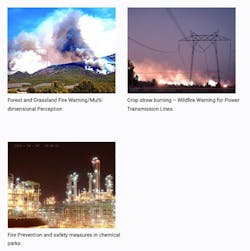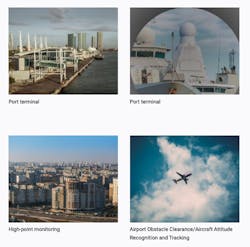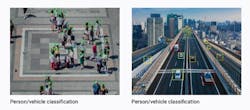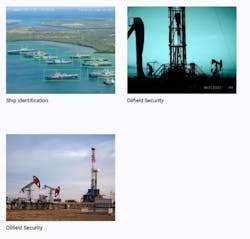Robotic Intelligent Camera Part 2 – The Varied Applications of Surveillance Cameras
In Part 1, we explored the basics of surveillance cameras and their role in modern society. Now, let’s delve deeper into the wide range of applications where these cameras are utilized, showcasing their importance in enhancing safety and security across different sectors.
Fire Prevention and Environmental Monitoring
One crucial area where surveillance cameras play a vital role is in fire prevention and environmental monitoring. Forest and grassland fires pose significant risks to ecosystems and human lives, and it is essential to detect and respond to these incidents swiftly. Surveillance cameras are deployed in various fire-prone areas, including tourism scenic spots, nature reserves, power transmission lines, and chemical parks. These cameras continuously monitor the surroundings, helping authorities detect the initial signs of fire and take prompt action to mitigate its spread.
Similarly, oil depots, oil/gas pipelines, and other critical infrastructure also utilize surveillance cameras for fire prevention. With the ability to monitor vast areas, these cameras act as extra eyes, ensuring early detection and rapid response to potential fire hazards. Additionally, environmental monitoring, such as tracking air quality and detecting pollution sources, benefits from the use of surveillance cameras equipped with advanced sensors.
Intrusion Alarm Monitoring and Security
Surveillance cameras are invaluable tools for intrusion alarm monitoring and enhancing security in various key areas. They help safeguard rivers, lakes, reservoirs, ports, docks, marine fishery areas, oil fields, city high points, cultural relics, airports, highways, railway lines, borders, and military bases. By strategically placing cameras in these locations, law enforcement agencies and security personnel can closely monitor any unauthorized activities or potential threats.
Video surveillance combined with intelligent algorithms and artificial intelligence (AI) enables the detection and classification of persons and vehicles. This advanced technology assists in identifying suspicious individuals, unauthorized access attempts, or vehicles involved in criminal activities. Facial recognition systems integrated with surveillance cameras aid in tracking individuals of interest or enhancing public safety during large gatherings or crowded events.
Law Enforcement and Crime Prevention
Surveillance cameras have become an integral part of modern law enforcement. Police departments and government agencies rely on these devices to maintain public safety and combat crime effectively. CCTV cameras deployed in public spaces, such as streets, parks, and shopping areas, act as a deterrent to criminal activities and provide crucial evidence for investigations.
Recording devices installed in police vehicles serve as a valuable tool for documenting interactions between police officers and the public during traffic stops, arrests, or other encounters. These recordings can be used to ensure accountability, protect the rights of both citizens and law enforcement personnel, and aid in the fair resolution of disputes or complaints.
License plate recognition systems, a form of surveillance technology, contribute significantly to traffic management and law enforcement efforts. These systems automatically capture and identify license plate numbers, enabling efficient monitoring of vehicles, identification of stolen vehicles, and enforcement of parking regulations.
Specialized Applications
Surveillance cameras find utility in various specialized applications as well. For instance, in the maritime domain, cameras are used for ship identification and tracking, ensuring port security and preventing illegal activities such as smuggling or piracy. Oilfield security relies on surveillance systems to safeguard critical infrastructure, deter theft or vandalism, and monitor operations in remote and challenging environments.
In port terminals, surveillance cameras assist in managing and securing cargo, preventing unauthorized access, and ensuring compliance with safety protocols. They also aid in monitoring environmental conditions and identifying potential hazards that may impact port operations.
Airports utilize surveillance cameras for multiple purposes, including monitoring passenger flows, enhancing security checkpoints, and detecting suspicious behavior or objects. These cameras also play a crucial role in obstacle clearance, ensuring safe takeoffs and landings by providing real-time monitoring of runways and taxiways.
Intelligent Transportation Systems benefit greatly from surveillance cameras. They help monitor traffic conditions, facilitate traffic flow management, and provide real-time.
For other articles on Robotic Intelligent Camera, please click here
Robotic Intelligent Camera Part 1: Revolutionizing Surveillance Technology




